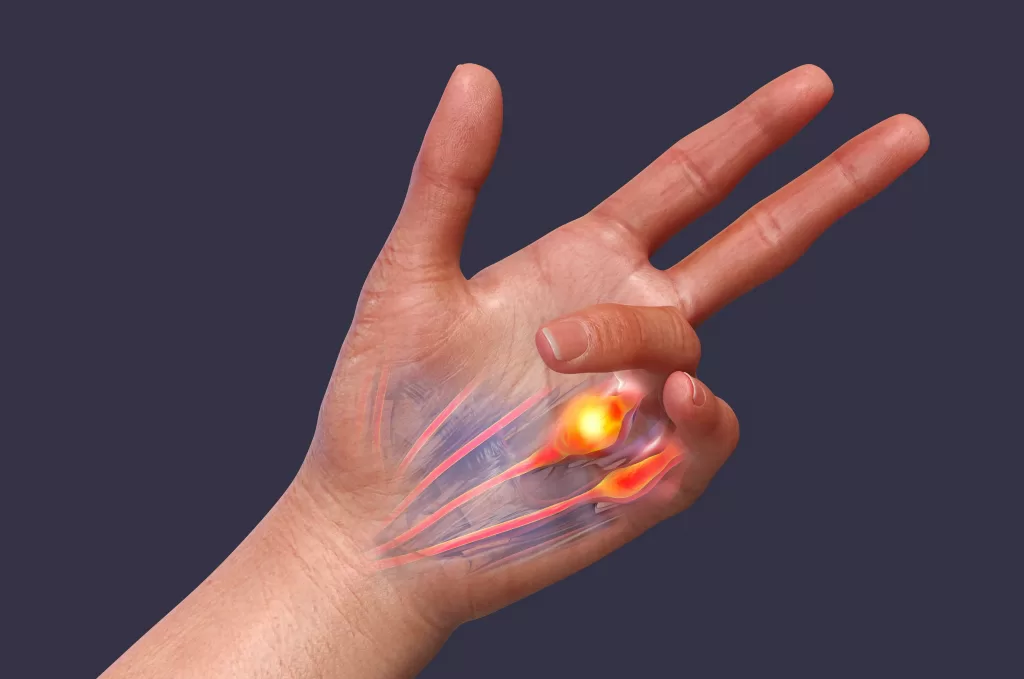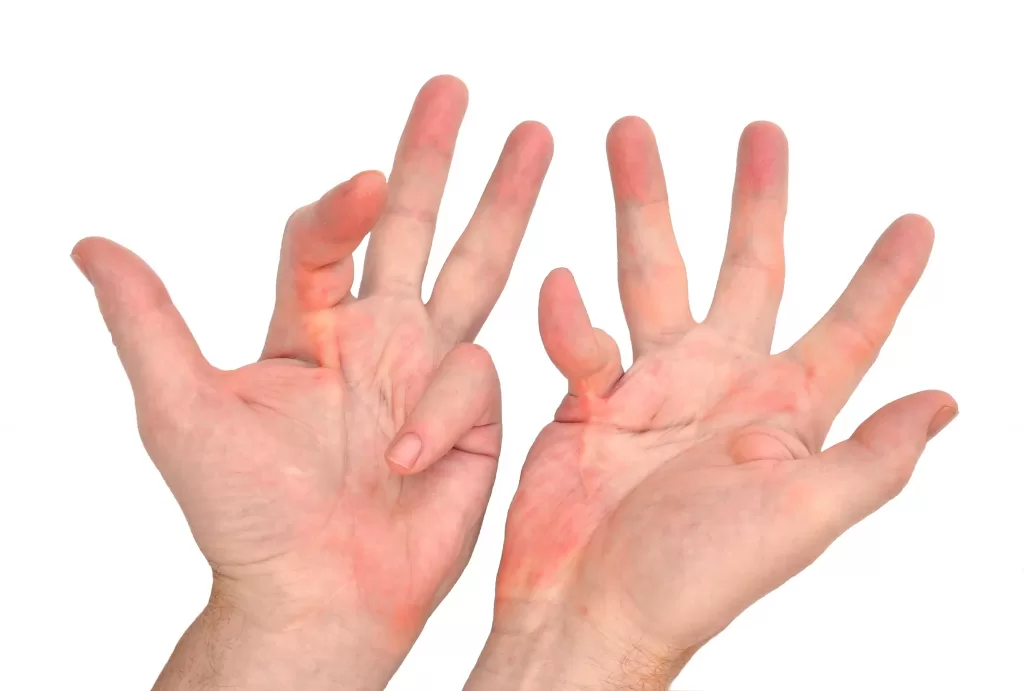Dupuytren’s Contracture
Medically Reviewed by Dr Aifric Boylan
Last updated on 07.08.2024
Dupuytren’s contracture is a condition that causes thickening of tissue in the palm of the hand, particularly over the bands that flex the middle, ring and pinky fingers. Initially the skin can become wrinkled, nodular and thick, but over time the bands to each of those fingers can contract or tighten which makes each affected finger difficult to fully extend. This can make the hand look clawed.
Symptoms and effects of Dupuytren’s Contracture
It generally is not painful but can cause a dull ache and affect the function of the hand as the ligaments and bands contract and tighten, leading to reduced use of the hand and sometimes stiffness in the fingers and wrist.
Just under half of cases include both hands, and when only one hand is involved, it’s usually the right one. The ring finger is most commonly affected, followed by the pinky and middle fingers. The thumb and index finger are usually not involved.
Causes and risk factors of Dupuytren’s Contracture
The main causes of Dupuytren’s contracture include genetics and occupational triggers. It is most common in Northern Europeans, where over a quarter of men over sixty have it. More generally, Dupuytren’s contracture affects about 5% of Caucasians worldwide. Manual labor, particularly when using vibrating machinery such as jackhammers, compactors, and grinders, is a known trigger. It is also more common in those over 50, and men are 3-6 times more likely to develop it compared to women. Other potential risk factors include prior hand trauma, alcoholism, high cholesterol, smoking, epilepsy, and diabetes.
There is also an association between Dupuytren’s contracture and Peyronie’s disease, which is a curvature of the penis. So if you have one, your doctor may ask you if you have the other.
Prevalence and patterns
There is also an association between Dupuytren’s contracture and Peyronie’s disease, which is a curvature of the penis. So if you have one, your doctor may ask you if you have the other.
Management and treatment options
If the affected hand is able to be used normally, management is not necessary immediately. However, the tight bands in the palm can continue to contract, and if that leads to impairment, discomfort, or clawing, treatment is suggested. This can include:
- Hand therapy: Includes bracing, splinting, massage, and active exercises.
- Radiotherapy: Particularly effective early in the contracture.
- Collagenase injection: A minimally invasive procedure done in an office, where the collagenase is injected into the cord. The following day, the doctor manually extends and massages the tight bands, thereby releasing them.
- Surgical fasciotomy: Less common since the introduction of collagenase injection; however, there is a role if the injection is not available or the disease is severe. This is usually performed by a plastic or general surgeon.
Is Dupuytren’s contracture a serious condition?
Dupuytren’s contracture is not a serious condition but can impact hand function, which can particularly be an issue for certain jobs and hobbies like climbing, musicians, surgeons and hairdressers. Your general practitioner is a great resource for education and planning of treatment.

Getting a Mental Health Care Plan in Australia: Your Guide
Getting a Mental Health Care Plan in Australia: Your Guide Mental health matters—and if you’re feeling overwhelmed, anxious, or down, a mental health care plan can help. But what is it, and how do [...]
UTI Symptoms and Treatment: What You Need to Know
UTI Symptoms and Treatment: What You Need to Know Urinary Tract Infections (UTIs) are common, uncomfortable, and often disruptive. But what exactly are the signs to watch for, and how can you get relief [...]
Free Mental Health Care Plan Online | Bulk-Billed by Qoctor
Free Mental Health Care Plan Online | Bulk-Billed by Qoctor Discover how to get a free, bulk-billed Mental Health Care Plan (MHCP) in Australia through Qoctor's telehealth service. Accessing [...]





